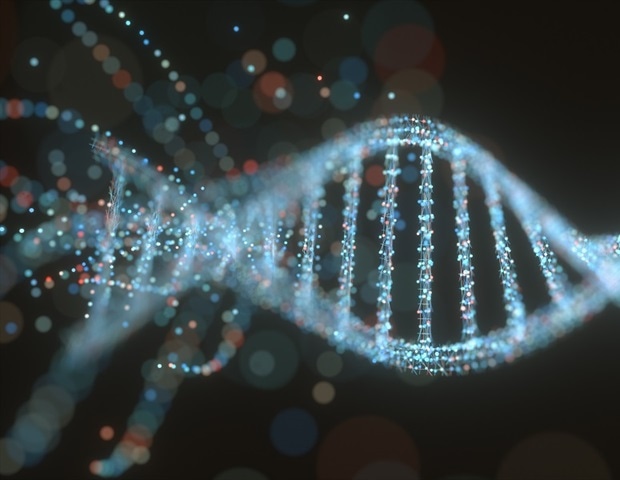
[ad_1]

If we do not take out the trash recurrently, our properties develop into disagreeable and even a hazard to our well being. The identical applies to our cells: If extra proteins and strands of genetic materials aren’t eliminated, the cell and finally the complete organism can fall in poor health. As an example, scientists suspect there’s a connection between Alzheimer’s and mutations that trigger defects in mobile rubbish elimination. What’s extra, assessments with mice have proven that suppressing the breakdown of DNA and RNA can set off critical autoimmune ailments.
However concrete proof is lacking: “There’s numerous analysis exhibiting how genetic info within the type of DNA and RNA is produced in people. However there’s much less information about how waste DNA and RNA are eliminated,” says Professor Oliver Daumke, a lab chief on the Max Delbrück Heart. To handle this, he teamed up with researchers from Kiel College to look at waste elimination in cells in additional element. Their work targeted on an enzyme known as PLD3, which is liable for breaking down waste. The researchers started by figuring out its construction utilizing a crystal construction evaluation. They had been in a position to establish particular segments that play a key position in breaking down RNA and DNA. “That gave us a greater understanding of how the waste is damaged down and of the morbid results of mutations within the PLD3 protein,” says Daumke.
Mutations within the PLD3 gene increase Alzheimer’s danger
PLD3 belongs to a protein household of enzymes that usually break down mobile fat in human cell organelles referred to as lysosomes. In people, PLD3 is produced by a gene of the identical identify.
We have been wanting on the PLD3 gene for a while already, as a result of it grew to become clear a number of years in the past that mutations within the gene could possibly be concerned within the improvement of Alzheimer’s.”
Professor Markus Damme of Kiel College
“Our work, in addition to work by different researchers, confirmed that PLD3 really breaks down DNA and RNA as a substitute of fat,” he says.
“However it wasn’t clear how this was occurring,” says Cedric Cappel, a researcher in Damme’s group and co-lead writer of the paper. “So we determined to look at the protein’s construction extra intently – within the hope that we may study one thing about its hyperlink to Alzheimer’s.” Cappel made among the protein and despatched it to Dr. Yvette Roske, a structural biologist in Daumke’s lab and the opposite co-lead writer of the paper. She succeeded in producing tiny crystals of PLD3. Exposing the crystals to X-rays produces a diffraction sample that made it attainable to reconstruct the protein’s construction. Roske may then depict the crystal construction with and with no certain RNA, and analyze it. “We discovered that two of those proteins mix to kind one thing known as a dimer. We have not seen that occur amongst different enzymes on this household,” says Roske. However why do the proteins do that? “It could possibly be as a result of the protein is simply secure in a pair,” says Cappel. “Alone, it could in all probability be damaged down.”
By their work, these two analysis teams have offered the primary structural proof of DNA and RNA being damaged down by PLD3. “Now we are able to achieve a tough understanding of the response mechanism,” says Roske. The researchers additionally discovered two areas of the protein that could possibly be key to its functioning and presumably altered in Alzheimer’s sufferers – an early indication of a attainable illness mechanism.
“Our analysis has offered a map of the protein,” says Cappel. Future research of PLD3 can use this map to reply questions resembling which areas are key to the functioning of PLD3, and what occurs when modifications are made to those areas. The researchers hope this can result in a greater understanding of the position the protein performs in sure ailments. This information would then probably make it attainable to take corrective motion.
Supply:
Journal reference:
Roske, Y., et al. (2023). Structural evaluation of PLD3 reveals insights into the mechanism of lysosomal 5′ exonuclease-mediated nucleic acid degradation. Nucleic Acids Analysis. doi.org/10.1093/nar/gkad1114.
[ad_2]